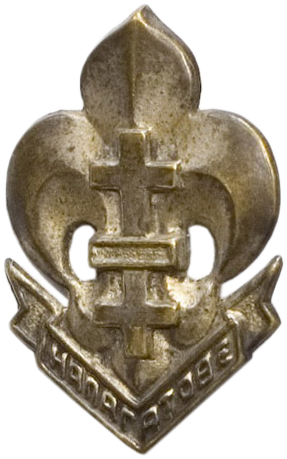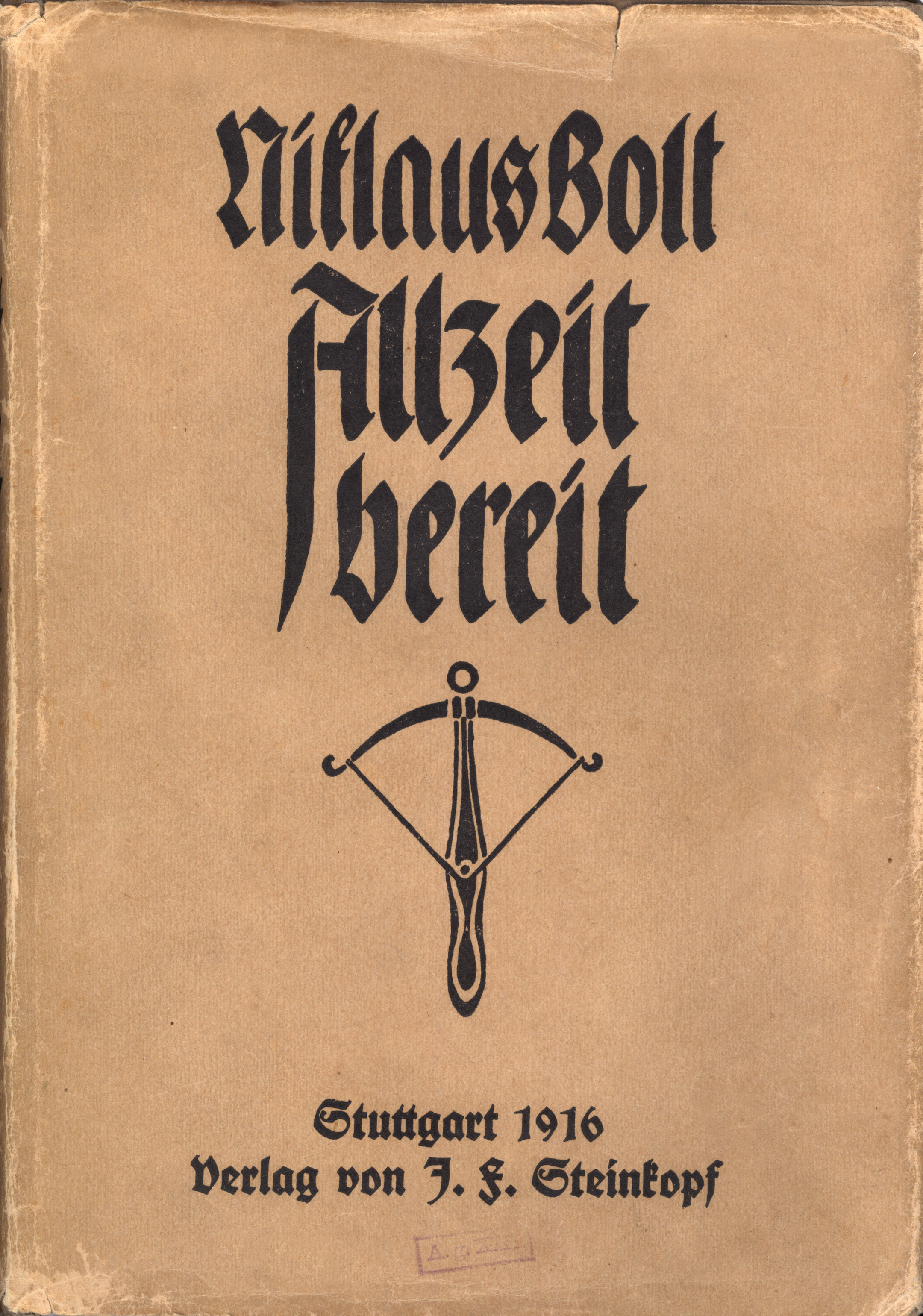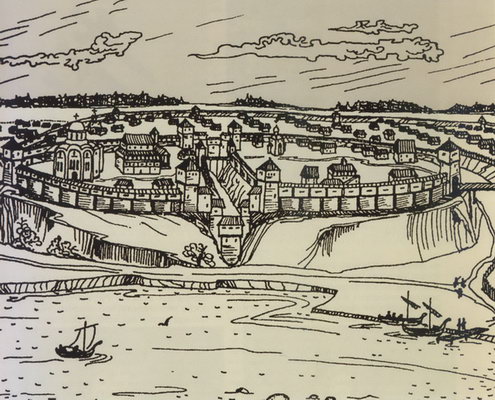|
National Scout Association Of Belarus
The Republican Scout Association of Belarus (, , , BRSA) is one of several nationwide Scouting associations in Belarus. It is the body recognized by the World Organization of the Scout Movement from 1998 to 2004 and again from September 5, 2010. On October 1, 2023, the association joined the European Scout Region, as the Eurasian region was dissolved. Initially, the organization was called the National Scout Association of Belarus (, BNSA) from 1998 to 1999. Belarus Scouting history The first Scout groups were established in Belarus in 1909 while it was part of the Russian Empire, and disbanded by the Soviets in 1922. Belarusian Scouting was reborn and reorganized in 1989. The National Organization of Russian Scouts (NORS), based in Australia, is assisting the rebirth of Scouting in Belarus. Belarusian Scouts have regular contacts and exchanges with members of Scouts et Guides de France and the CIS Scout associations. joined the World Organization of the Scout Movement ef ... [...More Info...] [...Related Items...] OR: [Wikipedia] [Google] [Baidu] |
Belarus
Belarus, officially the Republic of Belarus, is a landlocked country in Eastern Europe. It is bordered by Russia to the east and northeast, Ukraine to the south, Poland to the west, and Lithuania and Latvia to the northwest. Belarus spans an area of with a population of . The country has a hemiboreal climate and is administratively divided into Regions of Belarus, six regions. Minsk is the capital and List of cities and largest towns in Belarus, largest city; it is administered separately as a city with special status. For most of the medieval period, the lands of modern-day Belarus was ruled by independent city-states such as the Principality of Polotsk. Around 1300 these lands came fully under the Grand Duchy of Lithuania and subsequently by the Polish–Lithuanian Commonwealth; this period lasted for 500 years until the Partitions of Poland, 1792-1795 partitions of Poland-Lithuania placed Belarus within the Belarusian history in the Russian Empire, Russian Empire for the fi ... [...More Info...] [...Related Items...] OR: [Wikipedia] [Google] [Baidu] |
Minsk
Minsk (, ; , ) is the capital and largest city of Belarus, located on the Svislach (Berezina), Svislach and the now subterranean Nyamiha, Niamiha rivers. As the capital, Minsk has a special administrative status in Belarus and is the administrative centre of Minsk region and Minsk district. it has a population of about two million, making Minsk the Largest cities in Europe, 11th-most populous city in Europe. Minsk is one of the administrative capitals of the Commonwealth of Independent States (CIS) and the Eurasian Economic Union (EAEU). First mentioned in 1067, Minsk became the capital of the Principality of Minsk, an appanage of the Principality of Polotsk, before being annexed by the Grand Duchy of Lithuania in 1242. It received town privileges in 1499. From 1569, it was the capital of Minsk Voivodeship, an administrative division of the Polish–Lithuanian Commonwealth. It was part of the territories annexed by the Russian Empire in 1793, as a consequence of the Second Part ... [...More Info...] [...Related Items...] OR: [Wikipedia] [Google] [Baidu] |
Association Of Belarusian Guides
The Association of Belarusian Guides (ABG, Ассоциация белорусских гайдов, ) is the Belarusian member organization of the World Association of Girl Guides and Girl Scouts (WAGGGS), with a membership of 1,274 Girl Guides (as of 2003). Belarusian Guiding started in 1922 in the then Polish parts of present Belarus. In 1992, after the dissolution of the Soviet Union, the restart of Guiding was supported by WAGGGS; leader training was undertaken by the Girl Guides Association of Cyprus. The association became a member of WAGGGS in 1996. History The initial development of Scouting in Belarus took place within the Russian Scout movement, as part of the Russian Empire. A Scout organization was founded in Kletsk, and Scouts appeared in Nyasvizh and other nearby villages. In 1929, American Methodists helped found a Girl Scout organization in Vilna. It lasted until 1929, but by the end of the 1920s, Scouting had been banned by the Soviet Union, and Scout activiti ... [...More Info...] [...Related Items...] OR: [Wikipedia] [Google] [Baidu] |
Scouting And Guiding In Belarus
The Scout movement in Belarus consisted of 1200 members when it joined the World Organization of the Scout Movement (WOSM) in 2010. There are at least five nationwide associations as well as some regional associations. In addition, there were at one time Scouts-in-Exile in metropolitan areas of the United States, and there are presently international Scout units in Belarus. History The initial development of Scouting in Belarus took place within the Scouting in Russia, Russian Scout movement, which was headed by general Oleg Pantyukhov. Belarus was a part of the Russian Empire at that time. The first Scout organisations were not independent. Instead they were totally a part of the Russian Scout movement. They first gathered in Gomel. In 1912 several Boy- and Girl-Scout organisations existed in Gomel. They were Russian, Polish and Jewish. In 1915 there were already 170 little wolves (this nickname was used to call children aged from 7 to 11 years). Russian Scout organisations that ... [...More Info...] [...Related Items...] OR: [Wikipedia] [Google] [Baidu] |
Iconography
Iconography, as a branch of art history, studies the identification, description and interpretation of the content of images: the subjects depicted, the particular compositions and details used to do so, and other elements that are distinct from artistic style. The word ''iconography'' comes from the Ancient Greek, Greek ("image") and ("to write" or ''to draw''). A secondary meaning (based on a non-standard translation of the Greek and Russian equivalent terms) is the production or study of the religious images, called "Icon, icons", in the Byzantine art, Byzantine and Eastern Orthodox Churches, Orthodox Christian tradition. This usage is mostly found in works translated from languages such as Greek or Russian, with the correct term being "icon painting". In art history, "an iconography" may also mean a particular depiction of a subject in terms of the content of the image, such as the number of figures used, their placing and gestures. The term is also used in many academic ... [...More Info...] [...Related Items...] OR: [Wikipedia] [Google] [Baidu] |
Eastern Europe
Eastern Europe is a subregion of the Europe, European continent. As a largely ambiguous term, it has a wide range of geopolitical, geographical, ethnic, cultural and socio-economic connotations. Its eastern boundary is marked by the Ural Mountains, and its western boundary is defined in various ways. Narrow definitions, in which Central Europe, Central and Southeast Europe are counted as separate regions, include Belarus, Russia and Ukraine. In contrast, broader definitions include Moldova and Romania, but also some or all of the Balkans, the Baltic states, the Caucasus, and the Visegrád Group, Visegrád group. The region represents a significant part of Culture of Europe, European culture; the main socio-cultural characteristics of Eastern Europe have historically largely been defined by the traditions of the Slavs, as well as by the influence of Eastern Christianity as it developed through the Byzantine Empire, Eastern Roman Empire and the Ottoman Empire. Another definition was ... [...More Info...] [...Related Items...] OR: [Wikipedia] [Google] [Baidu] |
Patriarchal Cross
The patriarchal cross is a variant of the Christian cross, the religious symbol of Christianity, and is also known as the Cross of Lorraine. Similar to the Latin cross, the patriarchal cross possesses a smaller crossbar placed above the main one so that both crossbars are near the top. Sometimes the patriarchal cross has a short, slanted crosspiece near its foot ( Russian Orthodox cross). This slanted, lower crosspiece often appears in Byzantine Greek and Eastern European iconography, as well as in other Eastern Orthodox churches. In most renditions of the Cross of Lorraine, the horizontal bars are "graded" with the upper bar being the shorter, though variations with the bars of equal length are also seen. Imagery The top beam represents the plaque bearing the inscription "Jesus the Nazarene, King of the Jews" (often abbreviated in the Latinate " INRI" and in the Greek as " INBI"). Many symbolic interpretations of the double-cross have been put forth. One of them says tha ... [...More Info...] [...Related Items...] OR: [Wikipedia] [Google] [Baidu] |
Belarusian Language
Belarusian (, ) is an East Slavic languages, East Slavic language. It is one of the two Languages of Belarus, official languages in Belarus, the other being Russian language, Russian. It is also spoken in parts of Russia, Lithuania, Latvia, Poland, Ukraine, and the United States by the Belarusian diaspora. Before Belarus Dissolution of the Soviet Union, gained independence in 1991, the language was known in English language, English as ''Byelorussian'' or ''Belorussian'', or alternatively as ''White Russian''. Following independence, it became known as ''Belarusian'', or alternatively as ''Belarusan''. As one of the East Slavic languages, Belarusian shares many grammatical and lexical features with other members of the group. To some extent, Russian, Ukrainian language, Ukrainian, and Belarusian retain a degree of mutual intelligibility. Belarusian descends from a language generally referred to as Ruthenian language, Ruthenian (13th to 18th centuries), which had, in turn, descend ... [...More Info...] [...Related Items...] OR: [Wikipedia] [Google] [Baidu] |
Scout Motto
The Scout Motto of the Scout movement is, in English, "Be Prepared", with most international branches of the group using a close translation of that phrase. These mottoes have been used by millions of Scouts around the world since 1907. Most of the member organizations of the World Association of Girl Guides and Girl Scouts (WAGGGS) share the same mottoes. In the first part of ''Scouting for Boys'', Robert Baden-Powell explains the meaning of the phrase: Baden-Powell on "Be Prepared" Baden-Powell provides several descriptions of how and for what situations a Scout must be prepared elsewhere in ''Scouting for Boys''. In his explanation of the third point of the Scout Law, Baden-Powell says: In the opening chapter of ''Scouting for Boys'', Baden-Powell says: Baden-Powell discusses more skills required of Scouts in Chapter IV of ''Scouting for Boys'', which addresses camp life, and he lists: * Tying knots * Making a bivouac shelter for the night, or a hut for longer-term cam ... [...More Info...] [...Related Items...] OR: [Wikipedia] [Google] [Baidu] |
World Scout Committee
The World Organization of the Scout Movement (WOSM ) is the largest and, after the Order of World Scouts (formed in 1911), is the second-oldest international organization in the Scout Movement, having been established in 1922. It has 176 members. These members are national scout organizations that founded WOSM or have subsequently been recognised by WOSM, which collectively have around 43 million participants. Its operational headquarters is in Kuala Lumpur, Malaysia, although it is legally based in Geneva, Switzerland. WOSM's stated mission is "to contribute to the education of young people, through a value system based on the Scout Promise and Scout Law, to help build a better world where people are self-fulfilled as individuals and play a constructive role in society". WOSM operates through conferences of its member organization representatives, its committee and its full-time bureau, structured into regions. It is associated with three World Scout Centres. A World Scout J ... [...More Info...] [...Related Items...] OR: [Wikipedia] [Google] [Baidu] |
Homyel
Gomel (, ) or Homyel (, ) is a city in south-eastern Belarus. It serves as the administrative centre of Gomel Region and Gomel District, though it is administratively separated from the district. As of 2025, it is the List of cities and largest towns in Belarus, second-largest city in Belarus, with 501,193 inhabitants. Etymology There are at least six narratives of the origin of the city's name. The most plausible is that the name is derived from the name of the stream Homeyuk, which flowed into the Sozh river, river Sozh near the foot of the hill where the first settlement was founded. Names of other Belarusian cities are formed along these lines: for example, Polotsk from the river Palata (river), Palata, and Vitebsk from the river Vitsba. The first appearance of the name, as "Gomy", dates from 1142. Up to the 16th century, the city was mentioned as Hom', Homye, Homiy, Homey, or Homyi. These forms are tentatively explained as derivatives of unattested ''*gomŭ'' of uncertain ... [...More Info...] [...Related Items...] OR: [Wikipedia] [Google] [Baidu] |







